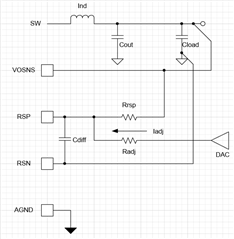Hi - I'm looking at TPS548D22 - Is there any way of margining the output voltage of the device using an external D/A converter or PWM.
(please see Slaae23 - Voltage Margining and Scaling Circuit With Current Output Smart DAC (Rev. A) (ti.com) OR
slva845a -Design Voltage Margining Circuit for UCD90xxx Power Sequencer and System Manager (Rev. A) (ti.com) )
The default voltage is 0.75V and we would like to electronically margin the output so that it is settable between 0.675V to 0.825V i.e, 0.75V +/-10%.
Thanks
regards, Ranjeet


